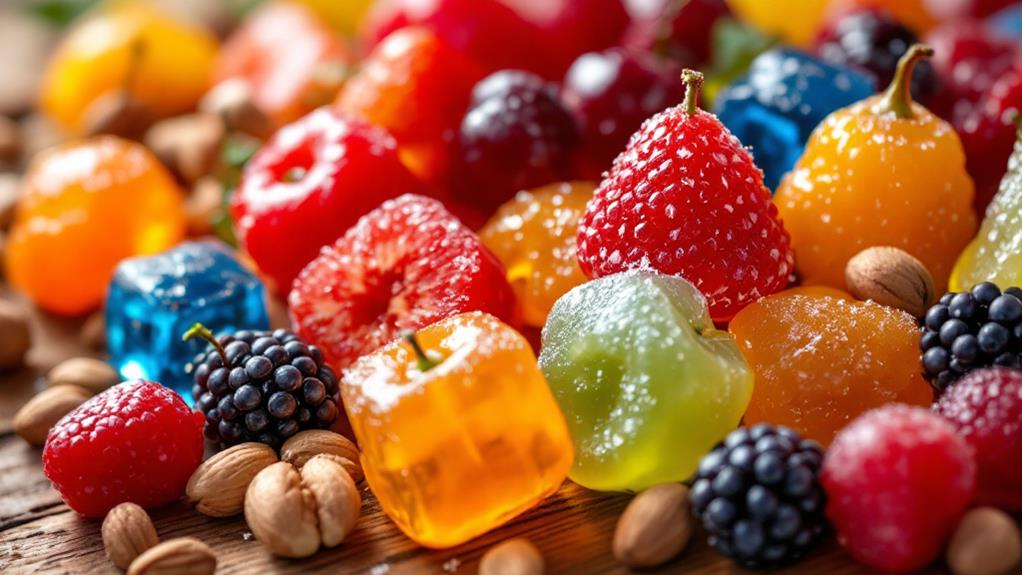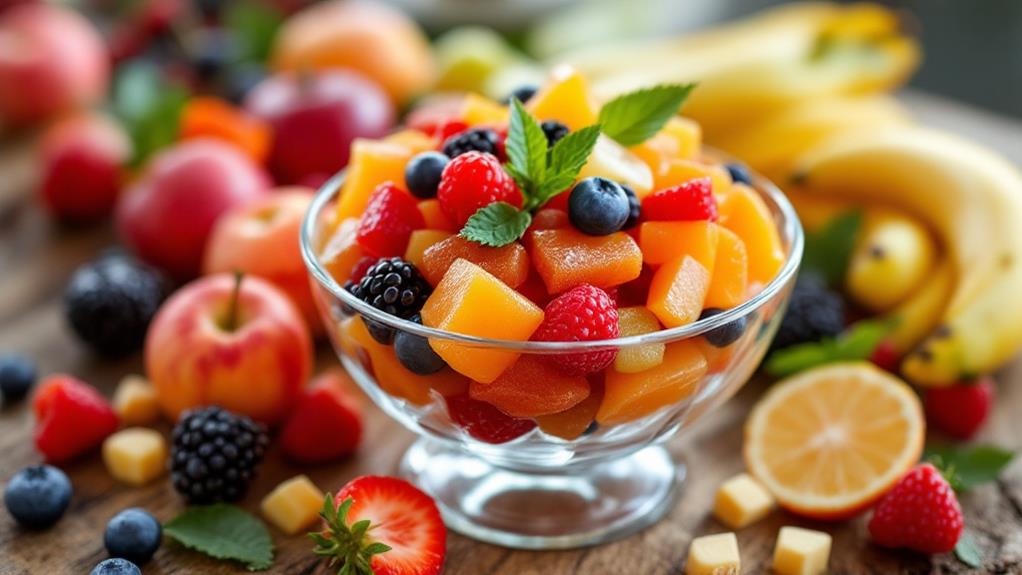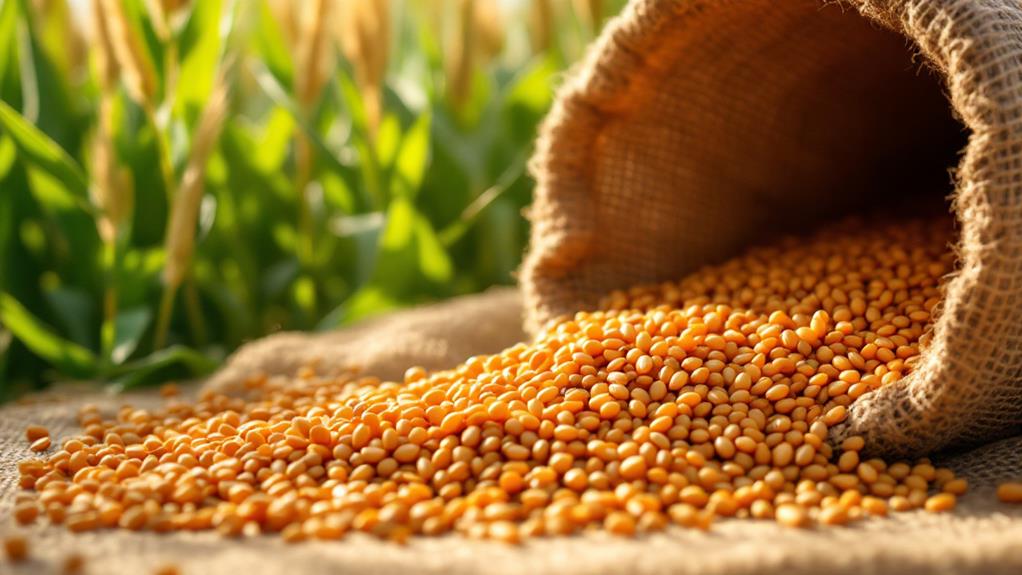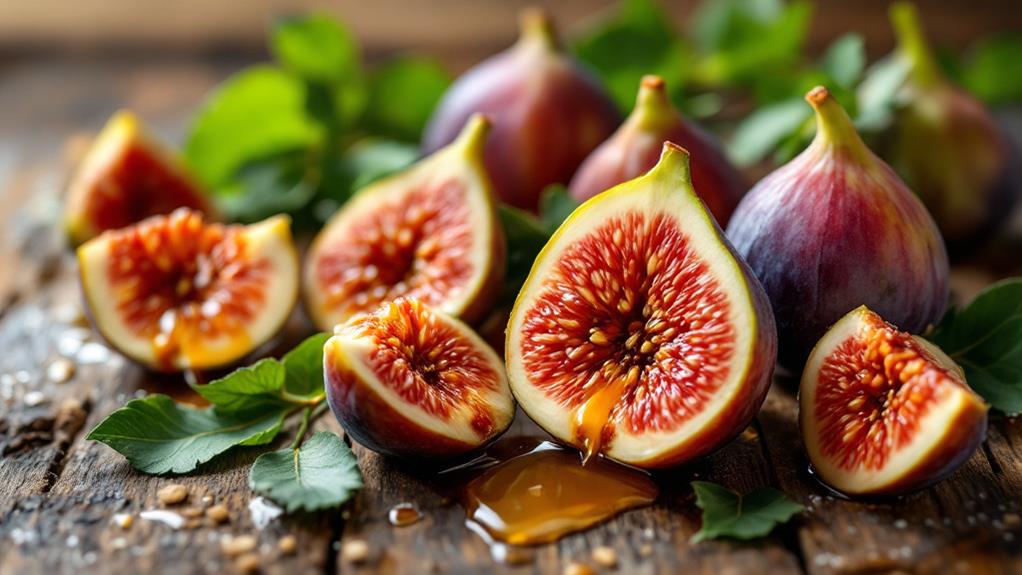Are Glace Fruits Bad for You? The Truth About Their Nutrition

Glace fruits, deliciously sweet and appealing, can be a guilty pleasure but they're better enjoyed in moderation. They're high in sugar, with up to 81g per 100g serving, and around 330 calories, primarily from carbohydrates. While they contain some vitamins and antioxidants, they don't offer the nutritional density of fresh fruits. Consuming them regularly can lead to excessive calorie intake, weight gain, and potential health issues like obesity and type 2 diabetes. Treat them as occasional indulgences and complement them with fresh fruits to maintain a balanced diet. There's more to uncover about making healthier choices.
Understanding Glace Fruits
Indulgence often comes with a sweet allure, and that's where glace fruits make their entrance. These treats, also known as candied fruits, are crafted by soaking fresh fruit in sugar syrup. This process replaces the fruit's natural water content with sugar, markedly increasing their sugar content and caloric value. With up to 81g of sugar per 100g serving, they quickly become a high-calorie indulgence, making moderation essential.
You might find glace fruits tempting in baking and confections, but it's vital to take into account their impact on your health, especially if you're managing sugar intake due to specific health conditions. Despite being high in sugars, these fruits aren't entirely devoid of nutritional value. They retain some vitamins and antioxidants, though their nutrient density doesn't match that of fresh fruit.
To maintain a balanced diet, it's wise to enjoy glace fruits sparingly. While they add a delightful sweetness to dishes, relying on them as a primary source of vitamins and nutrients isn't advisable. Instead, complement them with a variety of fresh fruits to guarantee you're getting the full spectrum of nutrients your body needs.
Nutritional Composition
Exploring the nutritional composition of glace fruits reveals their unique profile, dominated by high sugar and calorie content. These candied fruits pack about 330 calories per 100g, mostly from carbohydrates, with a whopping 81g of sugars. This makes them one of the high-calorie-density treats you might enjoy. The sugars in glace fruits come primarily from added sugars during the candying process, greatly impacting their nutrition profile.
When it comes to macronutrient diversity, glace fruits fall short. They contain virtually no protein or fat, meaning they don't contribute much beyond their sweet taste. The fiber content is modest, offering just 2g per 100g, which is less than what you'd find in whole fruits. While this fiber can contribute to your daily intake, it doesn't quite match up to the benefits of consuming fresh fruit.
In terms of vitamins and minerals, glace fruits are limited. They often provide negligible amounts of crucial nutrients like Vitamin C and calcium. Despite their appealing taste, the high sugar content and lack of substantial nutrition can pose potential health risks if consumed in large quantities. Keep this in mind when considering these sweet treats as part of your diet.
Health Implications

The high sugar content in glace fruits poses significant health implications, impacting your daily sugar intake and potentially leading to excessive caloric consumption. With up to 81g of sugar per 100g serving, these sweet treats can easily push you over your recommended sugar limits. The calorie content is another concern; at around 330 calories per 100g, glace fruits can contribute to weight gain if not eaten in moderation.
While they do offer some vitamins and antioxidants, glace fruits lack the nutrient density found in fresh fruits. This imbalance could lead to nutritional deficits if you frequently choose them over healthier snack options. Regularly consuming high-sugar snacks like glace fruits can increase your risk of health issues such as obesity and type 2 diabetes. It's essential to be mindful of these risks and consider the impact on your general nutrition.
Incorporating glace fruits into your diet isn't off-limits, but moderation is key. Being conscious of their high sugar and calorie content will help you maintain a balanced diet and prevent potential health problems. Opt for healthier alternatives when possible to support your long-term health goals.
Comparing to Other Sweets
Considering the health implications of glace fruits, it's helpful to compare them to other sugary snacks. Glace fruits, or candied fruits, pack a sugary punch, with some varieties containing up to 81g of sugar per 100g serving. That's a sugar content comparable to many processed sweets. Regarding calories, a 100g serving of these fruits delivers around 330 calories, similar to chocolate bars. While they might seem like a healthier snack option, they're not as nutrient-dense as whole fruits. The candying process strips away crucial vitamins and fiber, leaving you with a high sugar treat lacking in nutritional benefits.
When you compare glace fruits to whole fruits, the differences become more apparent. Whole fruits have a low glycemic index, making them a better choice for maintaining stable blood sugar levels. In contrast, the high sugar content in candied fruits can lead to rapid blood sugar spikes, posing risks for those managing diabetes or metabolic concerns. Although glace fruits may seem like a more wholesome alternative to traditional candies, their lack of nutrient density and high sugar levels make them more comparable to processed sweets than to a truly healthy snack.
Moderation and Balance

While indulging in glace fruits can be tempting, it's important to consume them in moderation due to their high sugar content. Some varieties pack up to 81g of sugar per 100g serving, making it vital to keep an eye on your intake. Maintaining a healthy diet means balancing your consumption of processed and fresh fruits. Glace fruits might offer some vitamins and antioxidants, but they shouldn't replace fresh fruits in your meals.
To guarantee a balanced diet, focus on incorporating a variety of fruits, prioritizing fresh and whole options. These provide necessary nutrients without the excessive sugar found in processed treats like glace fruits. Aim to limit your sugar intake to around 30g per day for adults. This approach helps prevent health risks associated with high sugar diets while still allowing room for occasional indulgences.
Consider treating glace fruits as rare treats rather than everyday snacks. This mindset helps you enjoy their flavors without compromising your health. By practicing moderation, you can include these sugary delights in your diet without exceeding recommended sugar levels. Remember, balance is key to maintaining a healthy lifestyle while enjoying a diverse range of fruits.
Making Healthier Choices
When you're browsing the aisles for a sweet treat, making healthier choices can significantly impact your diet. Glace fruits often tempt with their lively colors and sweet taste, but they're high in added sugars, with around 81g per 100g serving. This can quickly exceed your daily sugar limit. So, selecting glace fruits made with natural sweeteners or those with lower sugar content can help you enjoy them without derailing your health goals. Such alternatives not only reduce sugar intake but may also offer some health benefits.
Choosing glace fruits in moderation is important due to their calorie content, approximately 330 calories per 100g. Consuming them in large quantities can contribute to unwanted weight gain. To make healthier choices, look for options free from artificial preservatives and added sugars, aligning better with dietary guidelines.
For even better nutrient density, consider fresh fruits over their processed counterparts. Fresh fruits retain higher levels of key vitamins and minerals, enriching your diet with significant nutrients. By opting for these alternatives, you boost your snack's nutritional value and support general health, making every bite count toward a balanced diet.




